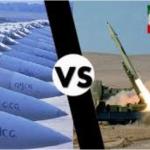Temporary residents will not assimilate or acculturate as do those who immigrate. But… what can be done here?
The university, McMullen says, is aiming to help international students “assimilate, acculturate and get a fuller, richer college experience.”
It’s also asking: “How do we get American students, especially Iowans who can be noncosmopolitan, to know more about the world?”
The growing pains playing out in Iowa City are happening in college towns around the nation, from Tuscaloosa, Alabama, to Corvallis, Oregon, to Lincoln, Nebraska.
Twenty years ago, about 42,500 students from China attended college in America, most of them for post-graduate work. Last year, that number reached nearly 275,000, with most coming for undergraduate degrees. Chinese students make up 30% of all international students studying in America; the other most-sought international students come from India, South Korea and Saudi Arabia.
The rise of Chinese students is most pronounced in the Midwest, with Big Ten universities heavily recruiting students within China over the last decade. Among the top 20 American universities with the highest Chinese student populations, nine are from the Big Ten, according to The Brookings Institution.
The University of Illinois at Urbana-Champaign leads the way with 10,000 international students, including about 4,900 from China. Purdue is not far behind with 9,000 international students, including 4,600 Chinese. At both universities, international students make up nearly one-quarter of the entire student body.
Michigan State has the highest population of Chinese students in the nation, with more than 5,300. Ohio State, Indiana, Minnesota and Michigan have seen an explosion in their Chinese student bodies: Each school has more than 3,000 Chinese students.
At Iowa, the number of Chinese students outnumbers the combined African-American and Latino student population.















